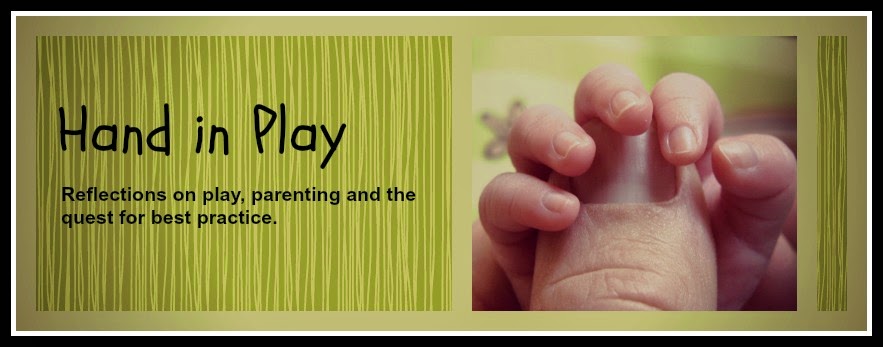Originally published in NPN/Neighborhood Parents Network's newsletter Parent to Parent, Vol. 34, No. 2, 2014.
With the help of Pinterest, fanciful playrooms for young
children across America have taken center stage. However, through my education and work, I’ve learned that I don’t
need to have the perfect color scheme or designer furniture to create an
inspiring place to play! I’ve
found that these simple steps are all that it takes to create a safe and
engaging space that any child can freely explore, without spending a dime.
Materials: Score! I already have the perfect play
materials in my house!
Children love exploring real life, everyday materials. I may find a Tupperware lid boring, but
my baby can’t wait to get her hands on it. When scavenging for materials, SAFETY FIRST.
I discovered that these household items are perfect for
play!
Lids (pan, pasta and salsa lids are shiny!) - Measuring spoons and cups - coffee canisters - tea towels - plastic soda bottles - bowls - wooden spoons - muffin tins - silicon cupcake liners – tupperware containers.
Tip: I like to collect
and display items in multiples to add an extra ‘wow’ factor.
Get Organized:
Since I don’t keep all my belongings in one box, why would I
expect my baby to? Little ones need
an organized space so that they can get to work without feeling overwhelmed. Instead of a toy chest, I prefer open
shelving that neatly displays materials. I enjoy organizing the materials by shape, color, or type in
fun baskets or containers. Everyday
objects always look more intriguing in a pretty container so am I frequently scouring
area thrift stores.
I know that babies and toddlers like to put stuff in and out of other stuff, so I pair materials with this
in mind. Here are some examples:
- Muffin tins and rocks
- Coffee canisters and balls
- Plastic soda bottles and popsicle sticks.
Simplify:
Less is more! I
frequently rotate materials to keep my play areas fresh and uncluttered. Children focus better when there are
less options and an open floor space.
The toddlers I’ve worked with love little surprises. For example, hanging wind chimes in
arms reach. Other fun tricks that
inspire play are adding colored water or rice to a soda bottle (secure the lid)
or stuffing scarves in an empty Kleenex box. It’s fun to tap into my inner baby
and see objects for the first time.
The possibilities for play are truly endless.
Make it a YES
environment:
Since I don’t want children playing in the potting soil, I cover
the base with cardboard. If I
don’t want something to go in the mouth, it doesn’t belong in the play space. Get the idea?
I love that I
don’t need a large space or big budget for play. By following these simple steps, I am able to sit back and enjoy
observing my baby as she brings the materials and environment to
life!
Resources:
Creative Toys to
Engage Babies; Janet Lansbury
http://www.janetlansbury.com/2010/12/creative-toys-engage-babies/
Simple Toys Make
Things Happen; Nicole Vigliotti




